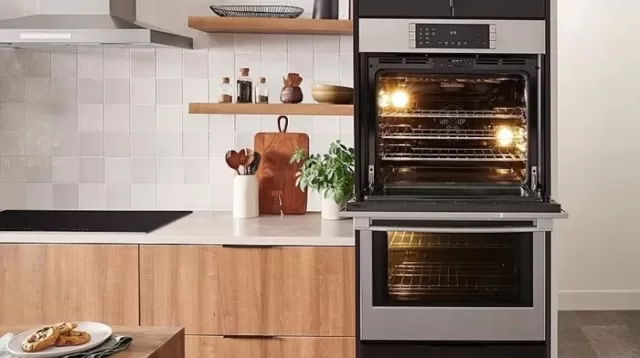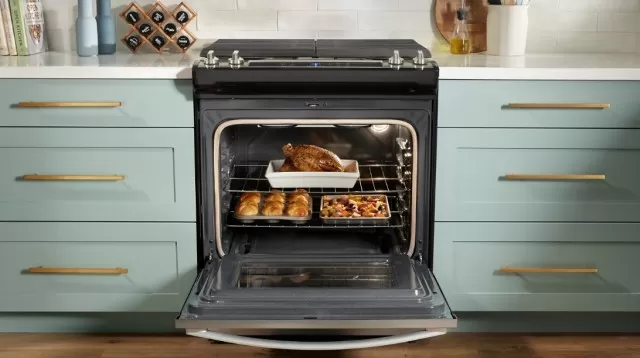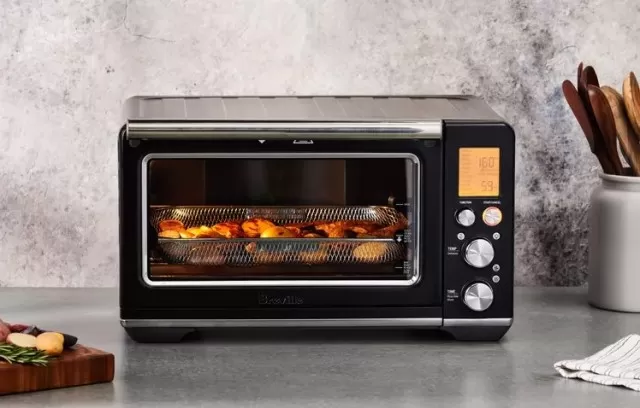When the accumulated grime and visible smoke indicate that action is necessary, we have devised the most effective methods to clean your oven.
To be honest, we prefer using our oven rather than cleaning it.
However, when the accumulated grime and visible smoke indicate that action is necessary, we have devised the most effective methods to clean your oven. By following these tips and techniques, you can ensure a thorough and safe deep-cleaning experience from top to bottom.
Opting for natural ingredients, you can clean your oven Using Vinegar and baking soda, which are commonly found in your pantry.
(Once you’ve cleaned your oven with vinegar, you can also utilize this powerful cleaner for various other tasks around the house!).
For spills or dishes that have overflowed, a more intensive cleaning approach is required.
Nonetheless, it is essential to incorporate regular and routine oven maintenance and cleaning as part of your routine. By employing our clever strategies for cleaning your oven during your regular cleaning schedule, you can prolong the time between deep-cleaning sessions.
Tips to Naturally Clean Your Oven

If you’re hesitant to utilize the self-cleaning function of your oven, natural alternatives are using common household items that can effectively clean your oven.
One such hack involves using your oven’s primary tool. According to Kris Koenig, CEO of Natura Clean, “Place a pan of water in the oven and set the temperature to 225 degrees Fahrenheit for at least 15 minutes.
Once it has cooled down sufficiently, add some dishwashing soap to the water in the pan. Then, use a nylon sponge or non-scratch wool pad to scrub away the loosened grime and clean the entire interior of the oven.
Another natural method to clean your oven involves using vinegar and baking soda to tackle stubborn stains and tough spots.
To remove baked-on food from the oven floor, sprinkle baking soda over it. For the sides of the oven, create a paste by mixing baking soda with water, then apply the paste to the problem areas.
Leslie Reichert, also known as The Green Cleaning Coach, suggests spraying the baking soda paste with white distilled vinegar, which will cause it to foam and effectively work on the stains. For optimal results, let the solution sit overnight before wiping it away with a warm, wet cloth.

When it comes to cleaning the oven racks, it’s best, to begin with an overnight soak and a thorough scrubbing.
Start by removing the oven racks and soaking them in hot, Soapy Water overnight, either in your bathtub or a large container. Once soaked, scrub them with a brush or abrasive pad and rinse them clean.
Baking soda and vinegar can also be used to naturally clean the oven racks. Place the racks in a large container, sprinkle them with baking soda, and then Spray Vinegar over them.
Allow the mixture to foam before filling the container with water and letting the racks soak overnight. Afterward, wipe and scrub the shelves dry before placing them back in the oven.
The glass door of the oven can accumulate grime and splatter as well.
Cleaning it to restore its like-new condition is easily accomplished with a razor blade. Begin by coating the inside of the oven window with an all-purpose spray cleaner and allowing it to sit for a while.
Carefully scrape away stubborn burn marks and food debris using the razor blade. For more stubborn stains, create a paste using baking soda and water, apply it to the window, let it sit overnight, and then wipe it clean with a warm, damp cloth.

Incorporating regular oven cleaning into your routine is essential for maintaining a clean and functional appliance.
Clean up spills and dribbles as soon as the oven has cooled down enough to do so. Kenny Schultz, the COO of MyClean, recommends incorporating a quick oven scrub-down using baking soda and water into your regular kitchen cleaning routine.
Additionally, don’t forget to clean the oven drawer, as it can become a haven for crumbs. Remove the oven drawer, sweep up any messes, or use a hand vacuum to clean all the crevices.
A few times a year, pull the oven out from the wall and clean underneath and behind it, following the manufacturer’s instructions to avoid damaging the floor or disconnecting the gas line.
In emergencies where spills occur during cooking and you can’t immediately turn off the oven, salt can be a useful natural cleaner.
According to author Donna Chandler in The Hints Book Almanac, simply sprinkle a handful of salt on top of the spill, and continue with your baking. The salt will prevent smoking or unpleasant odors and will bake into a crust that can be easily cleaned once it has cooled.
To prevent oven messes, especially when cooking foods that may drip, place pans on a baking sheet to catch any spills, or keep a baking sheet below the pan while baking.
It’s important to note that aluminum foil should not be used to catch spills unless explicitly allowed in the manufacturer’s manual for your specific appliance.

For cleaning the oven exterior, promptly wipe up spills as they occur using a damp cloth.
An all-purpose cleaner can be used for routine wipe-downs. stainless steel appliances, including ovens, tend to accumulate fingerprints and smudges.
To keep them looking their best, use microfiber cloths to avoid leaving lint behind, wipe with the grain of the stainless steel, and avoid using abrasive cleaners or scrubbers. While rubbing or essential oils can provide shine to stainless steel, they should not be used to clean ovens or other heat-conducting appliances due to their flammability.
When it comes to cleaning a stove top, the method depends on the type of stove you have.
In general, wiping up spills as they occur and giving the cooktop a quick wipe-down after each use can prevent the need for extensive cleaning later on.
Self-cleaning ovens offer convenience but also come with certain drawbacks.
They work by using high temperatures to burn off interior grime, which can create potentially toxic fumes. It is recommended not to leave your home while the self-cleaning process is ongoing.
It is also important to follow the manufacturer’s instructions, and remove all pans, grates, drawers, and solid spills and grease before starting the self-clean cycle. Keep pets and individuals with respiratory issues out of the area and ensure proper ventilation.
*The information is for reference only.